
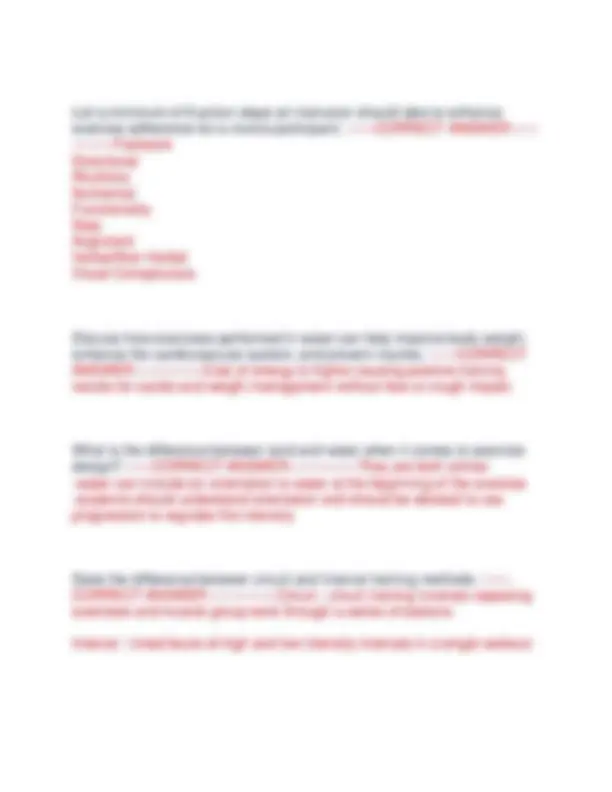
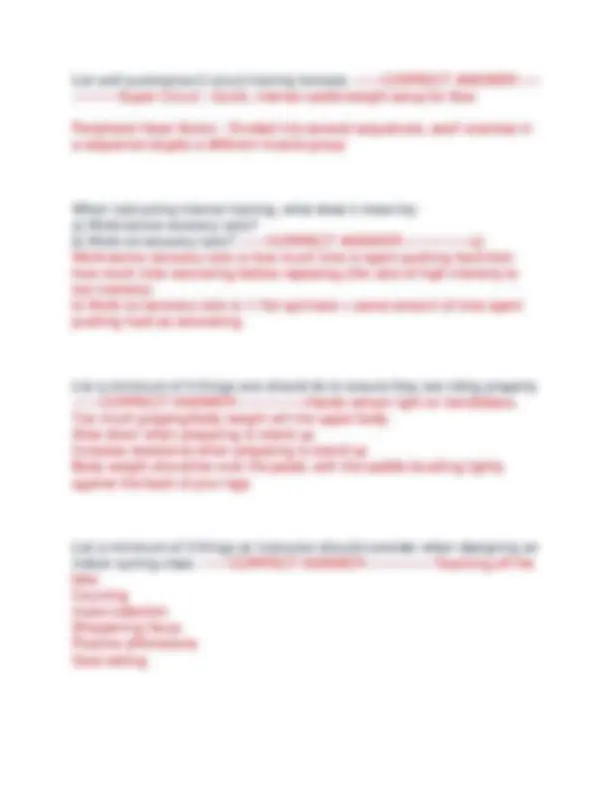

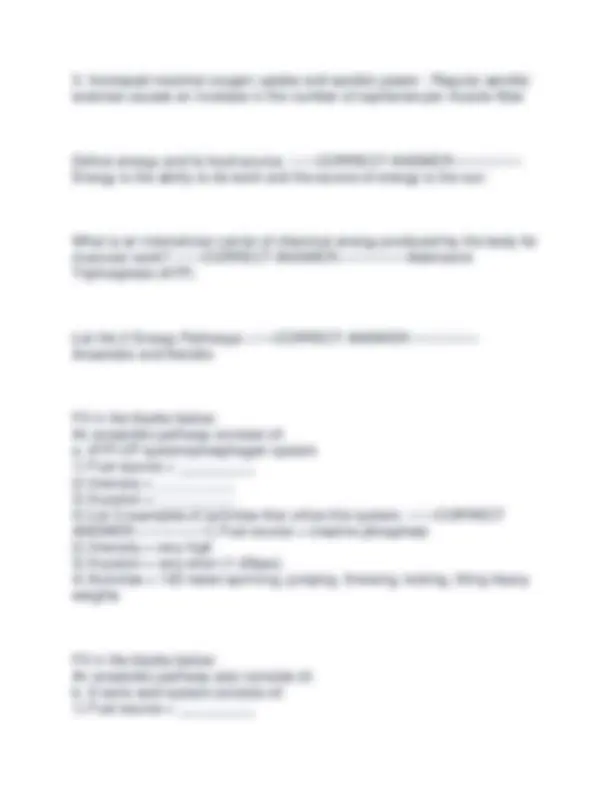
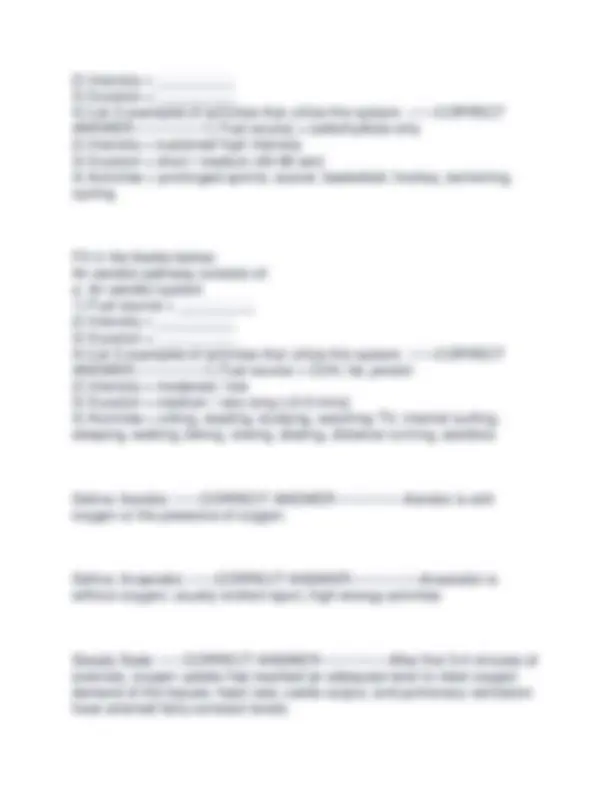
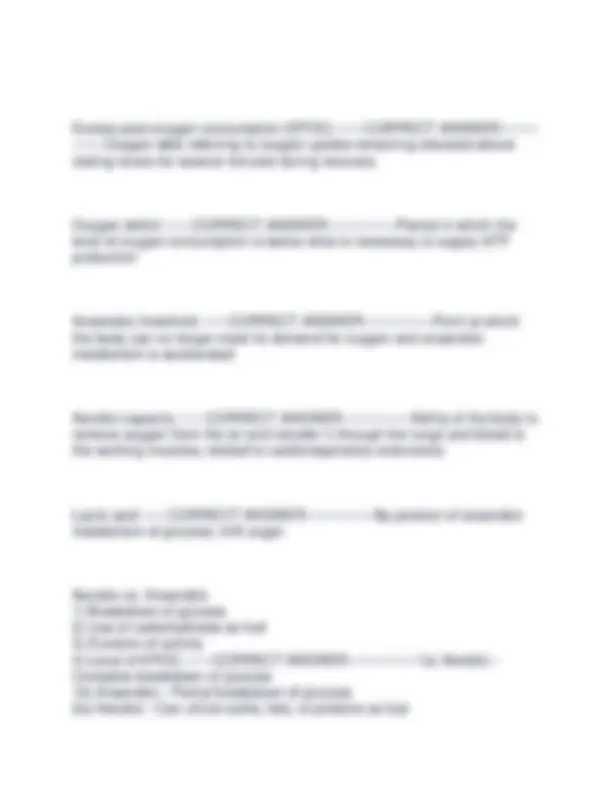


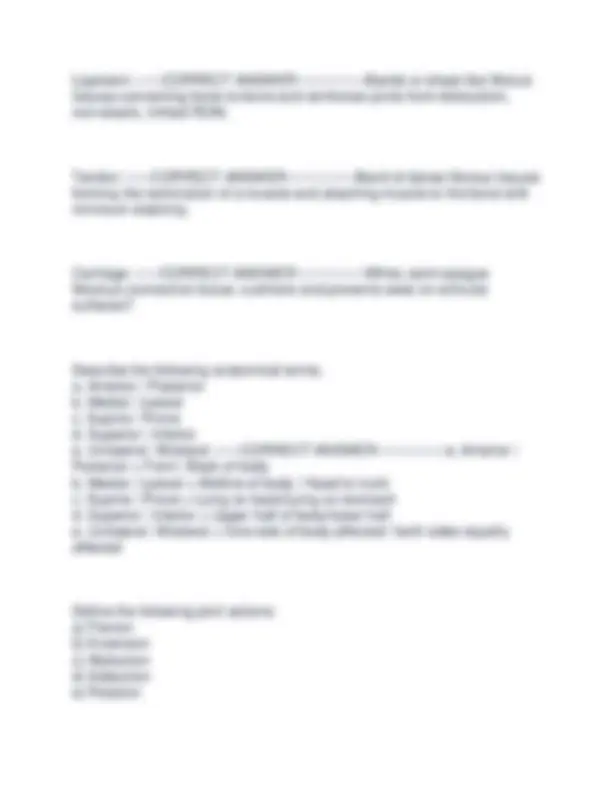
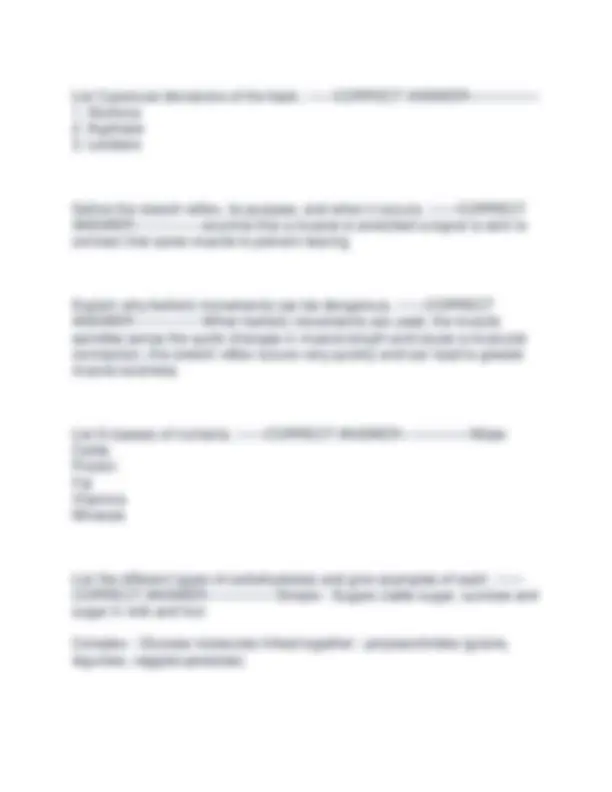
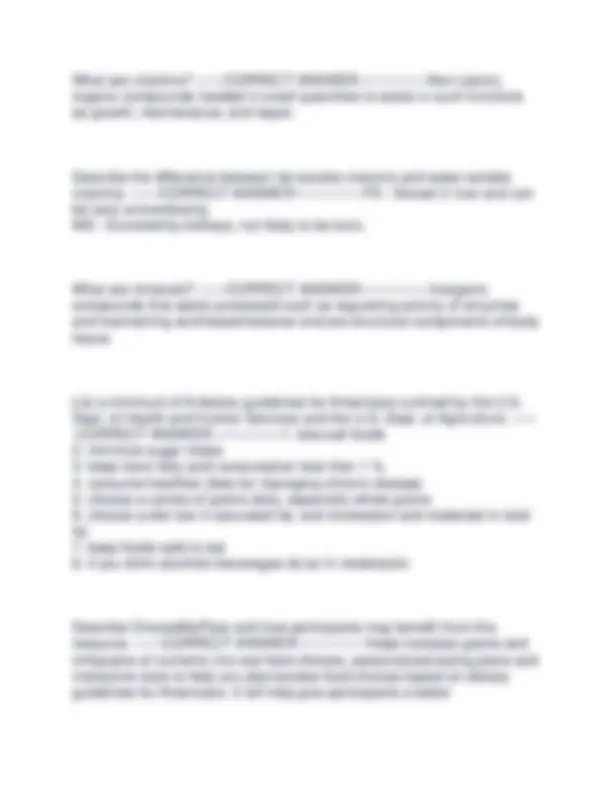
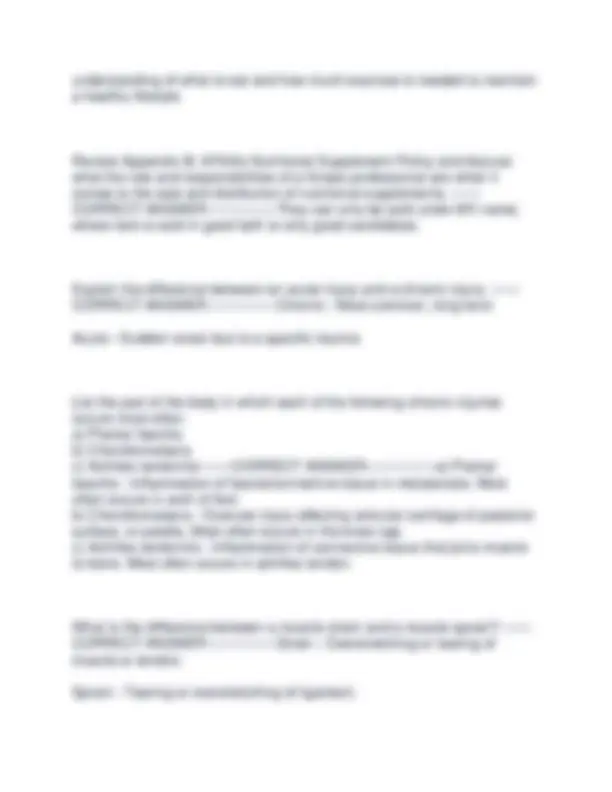
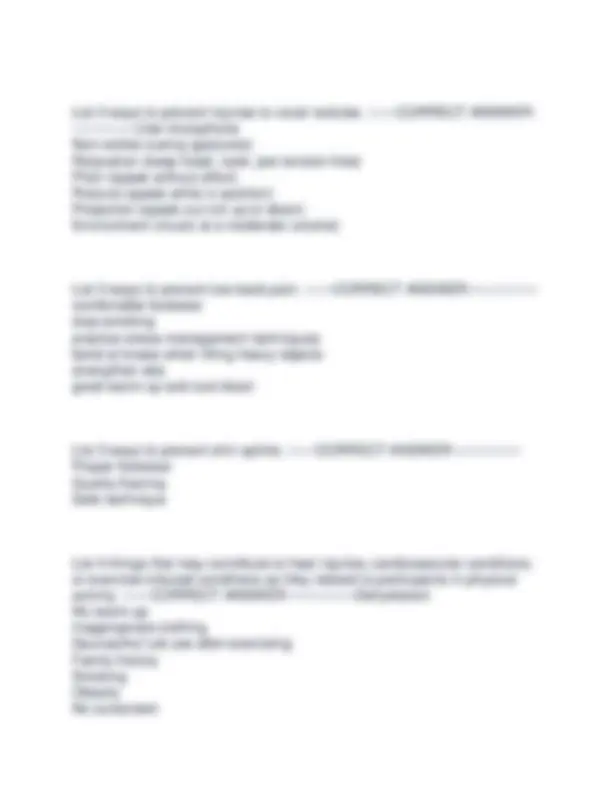

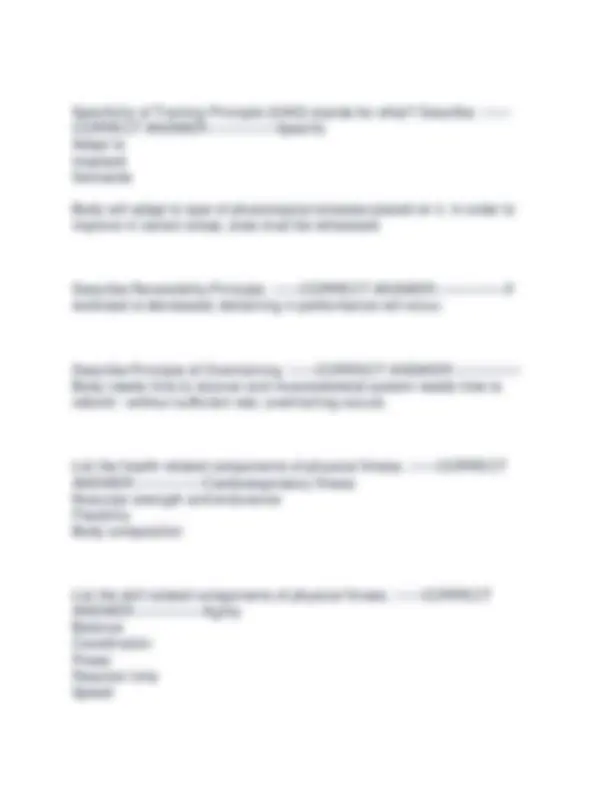
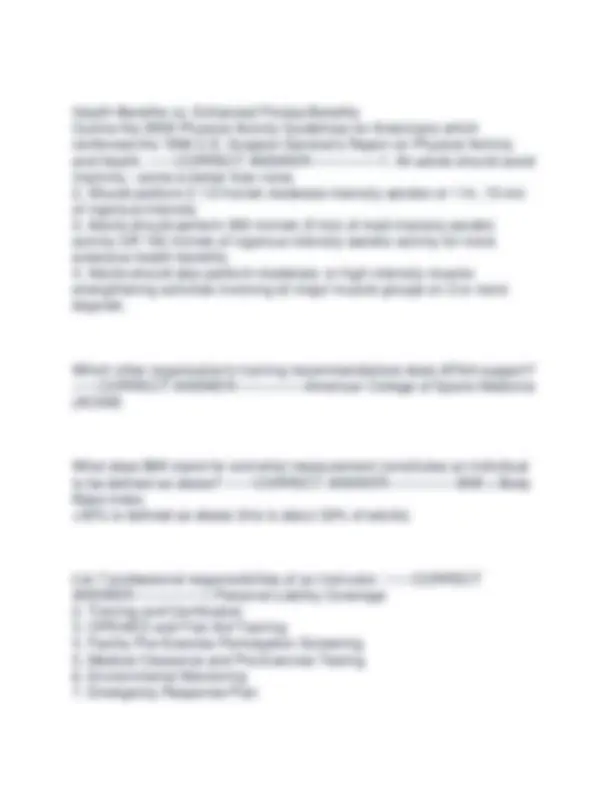
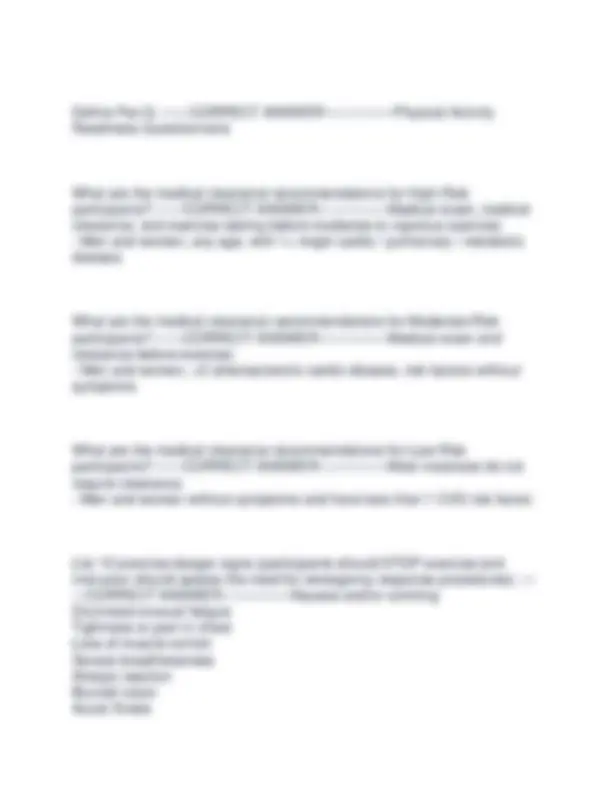
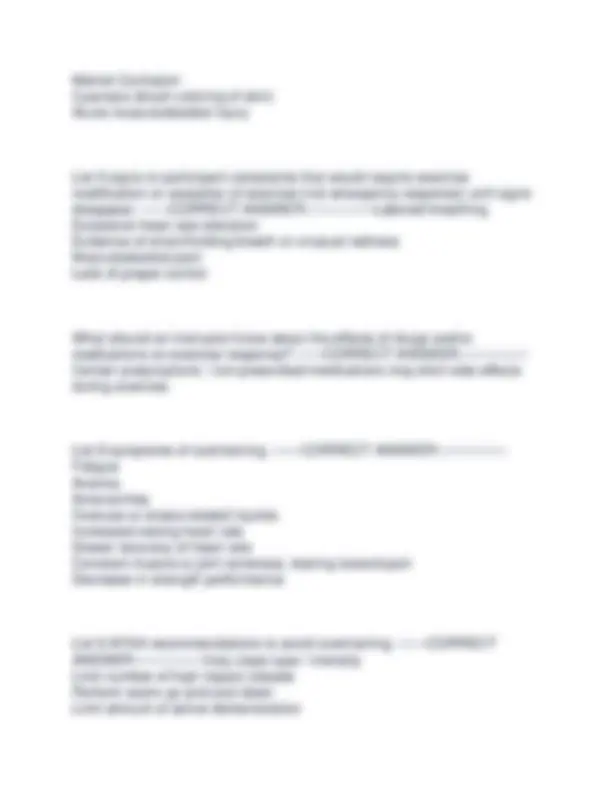
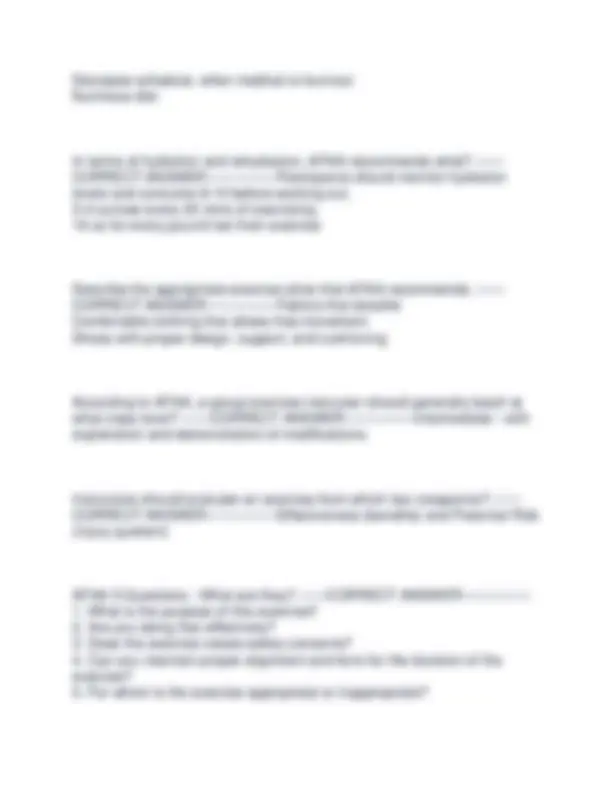
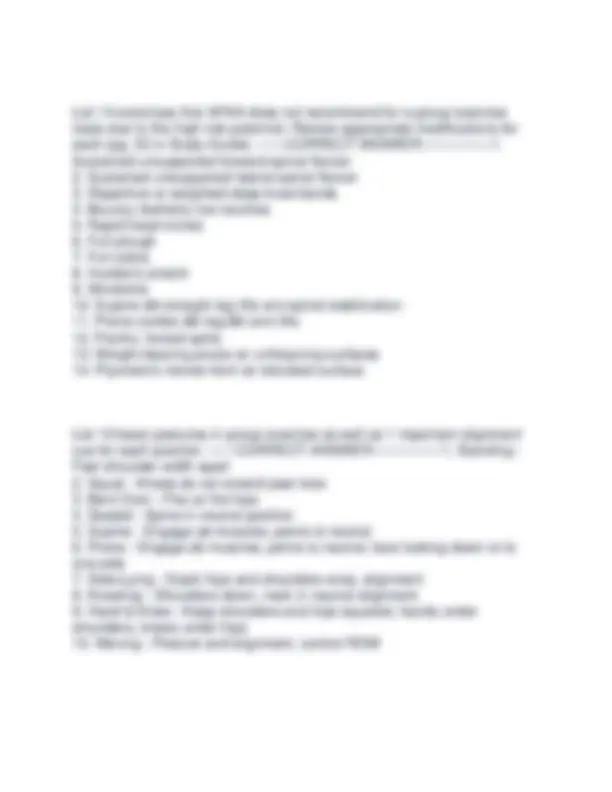
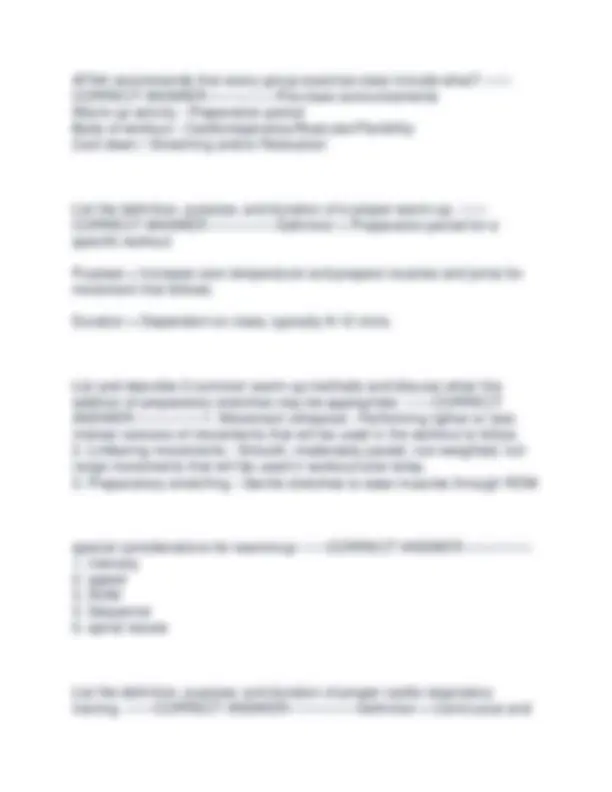
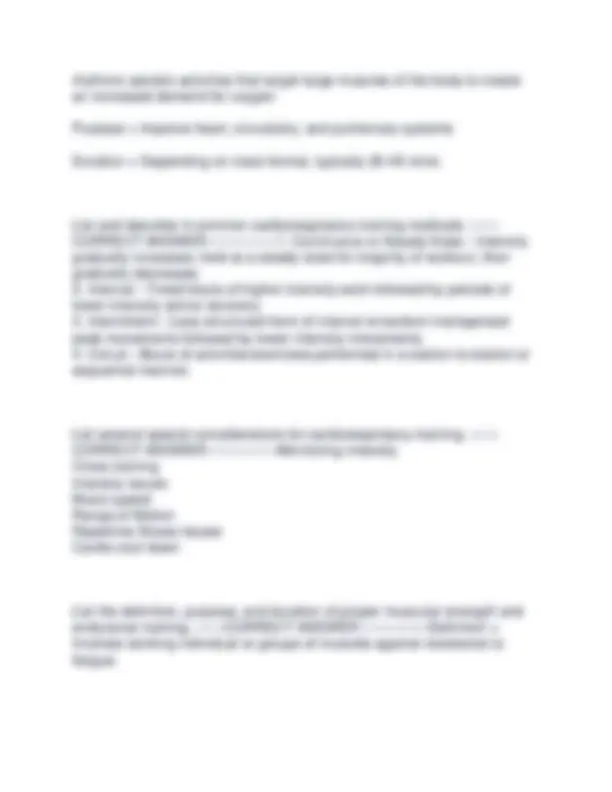
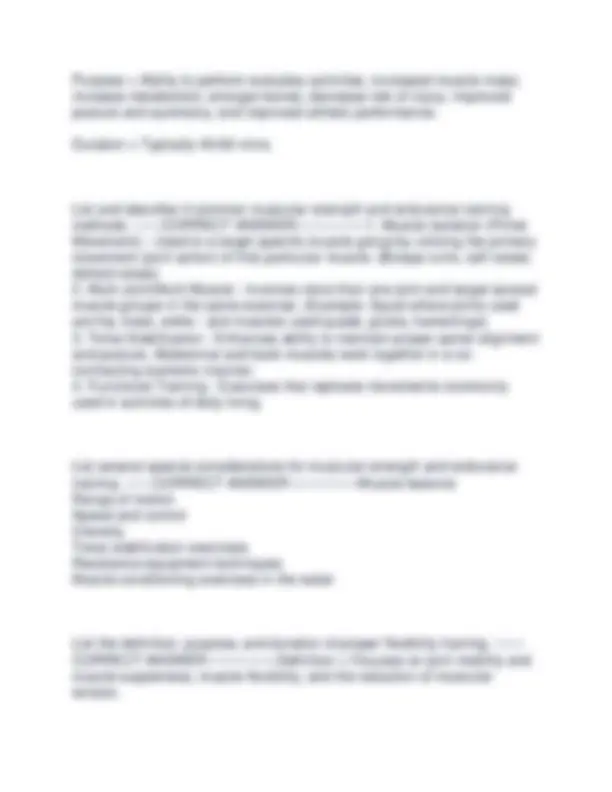
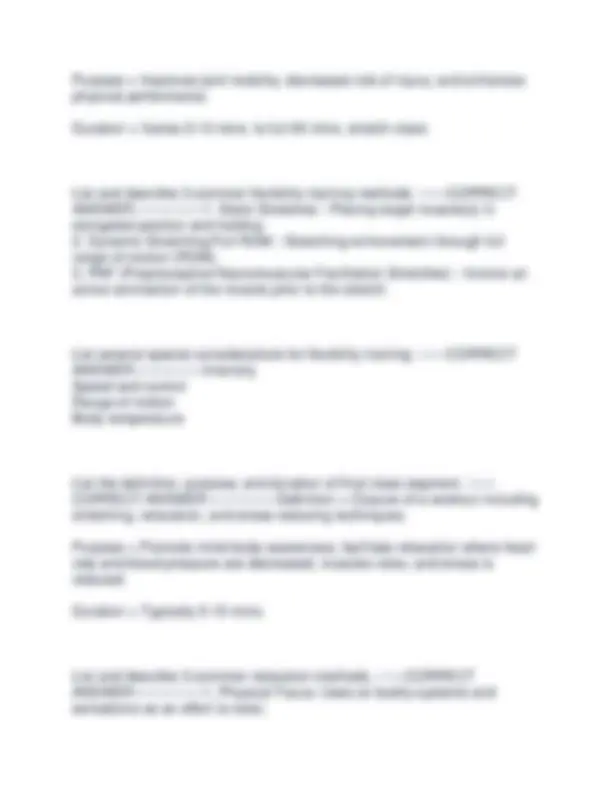
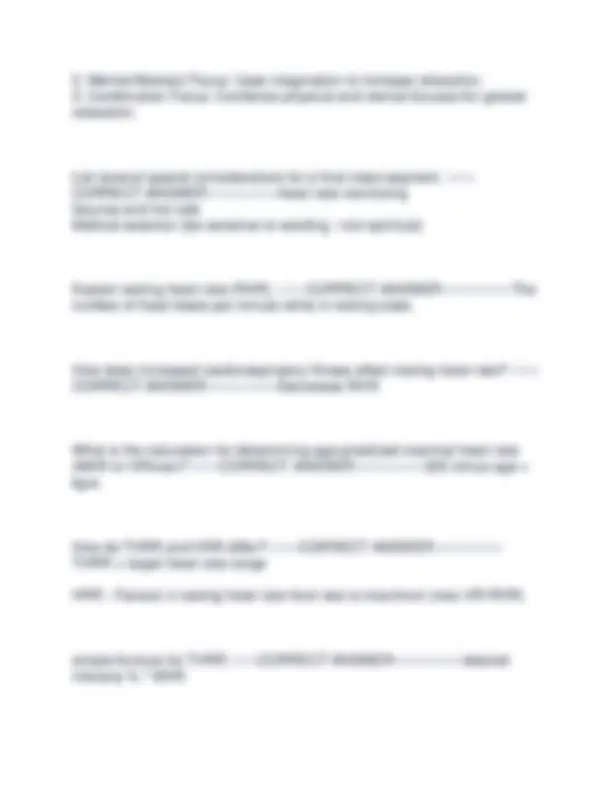
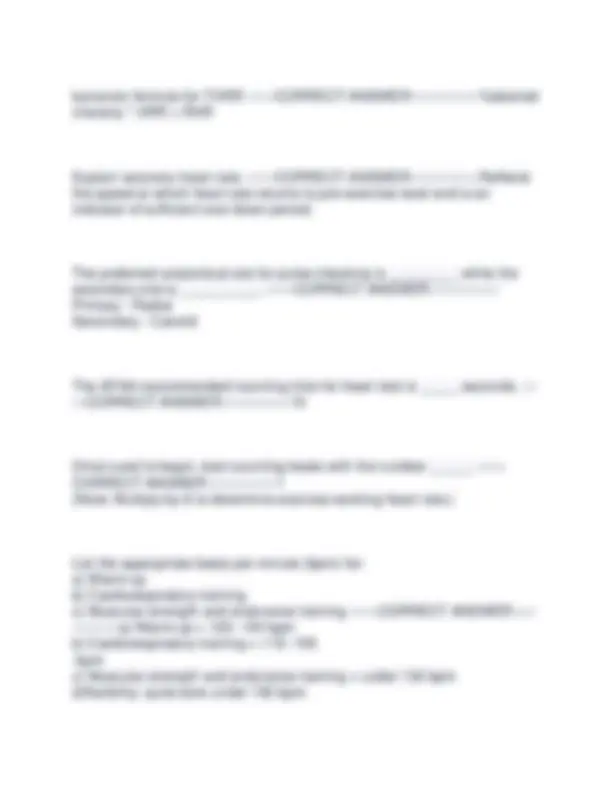
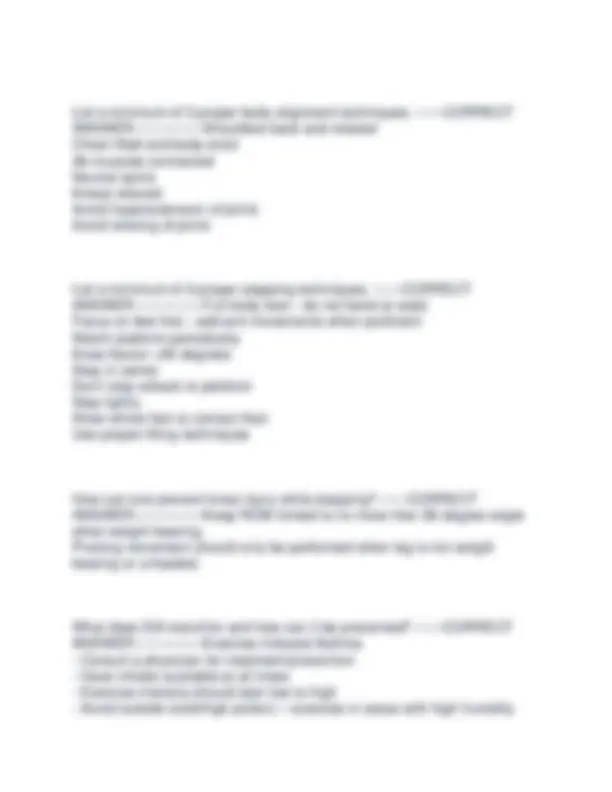
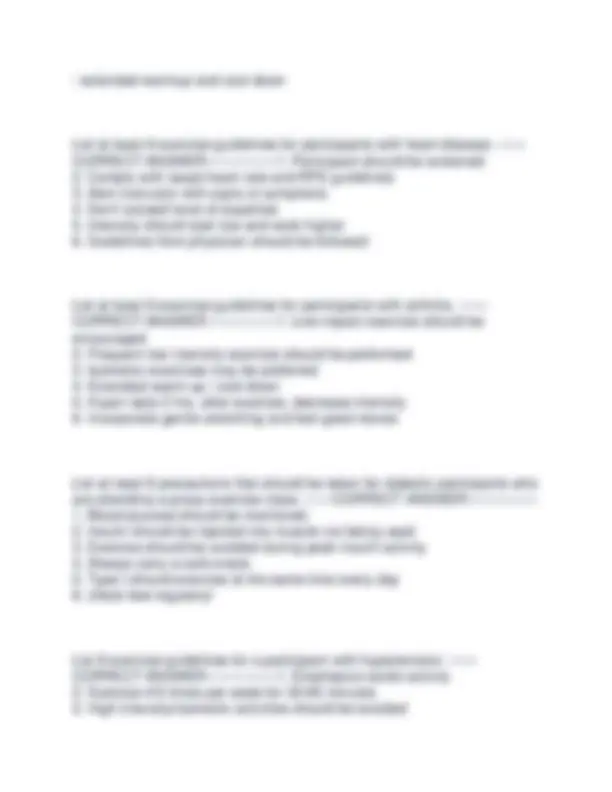
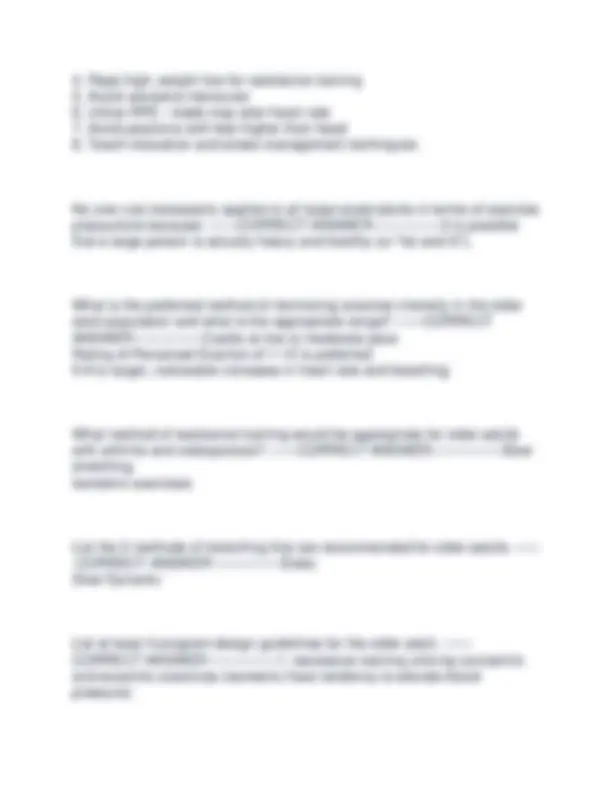
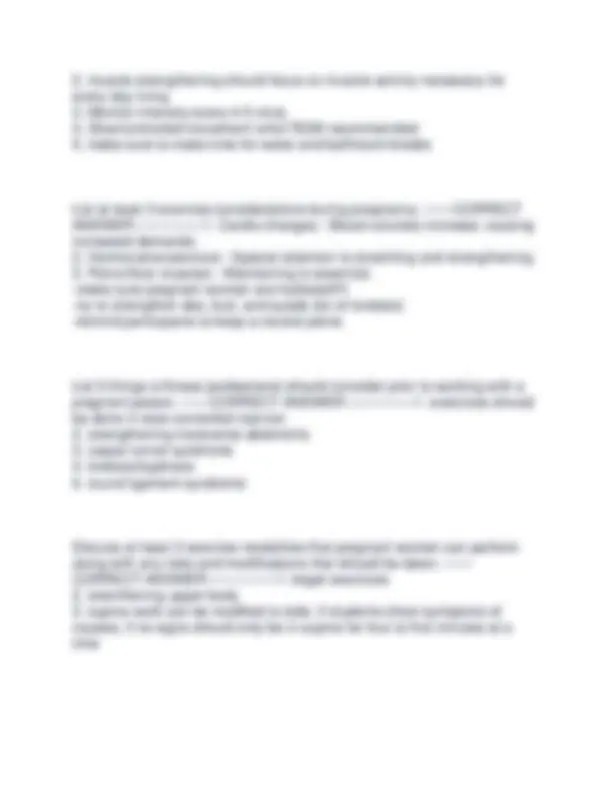
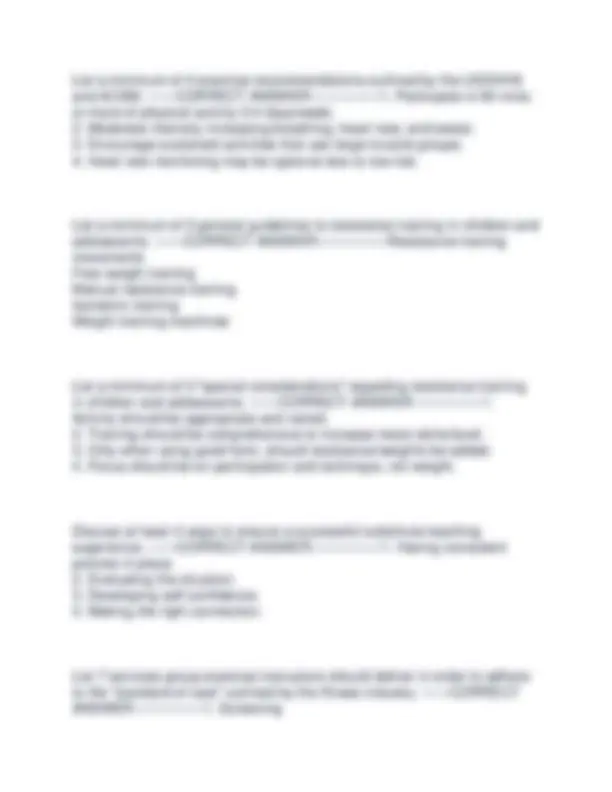
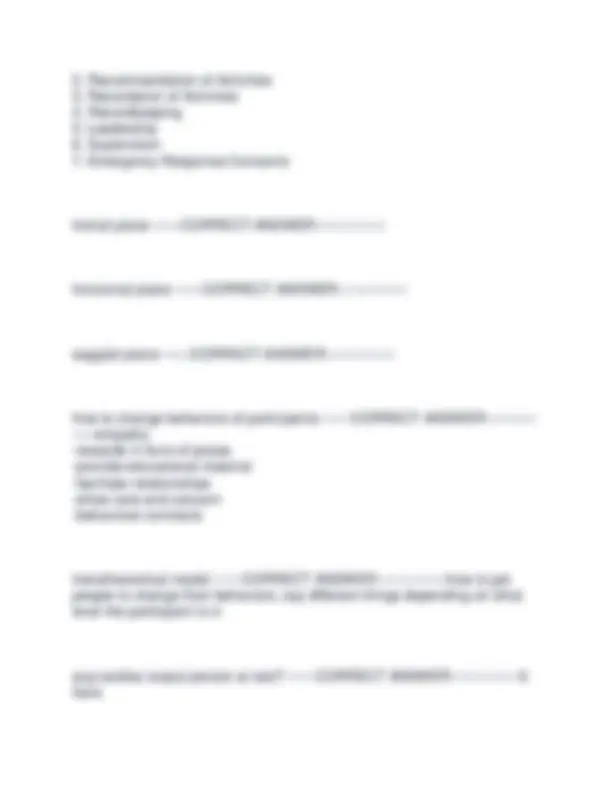

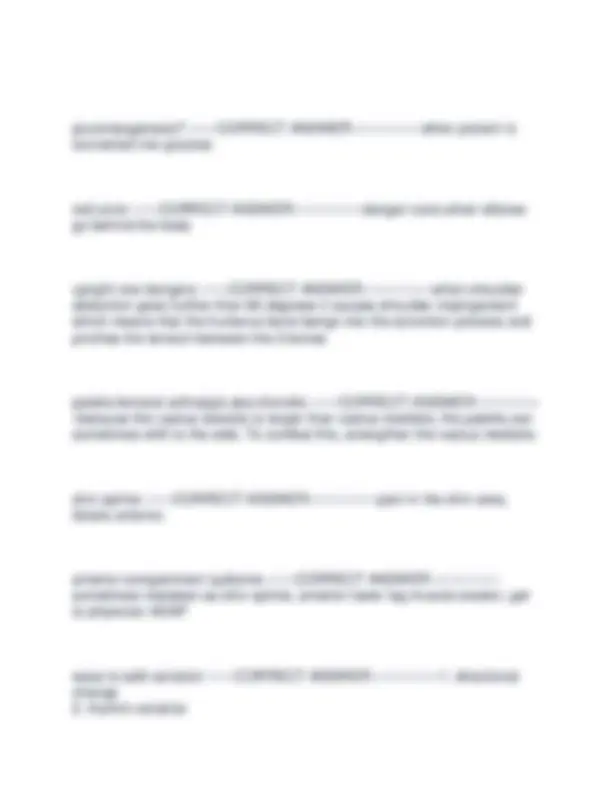
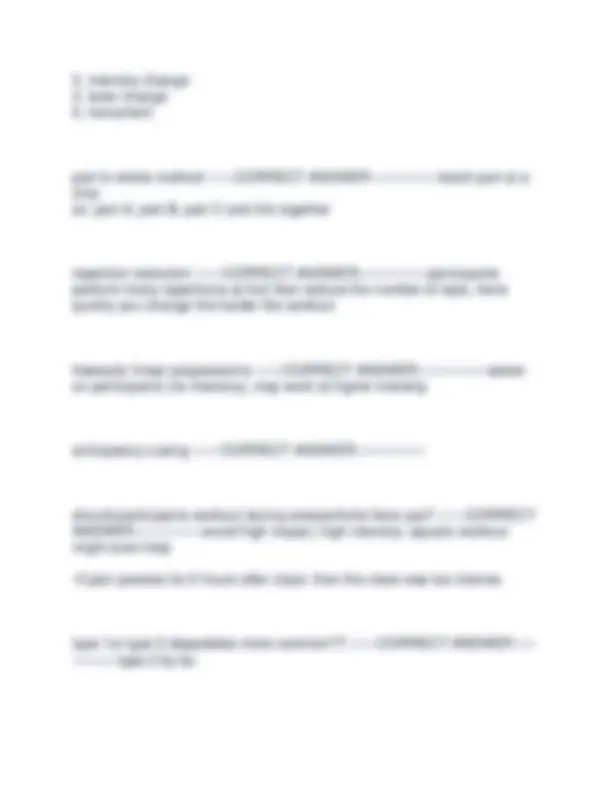



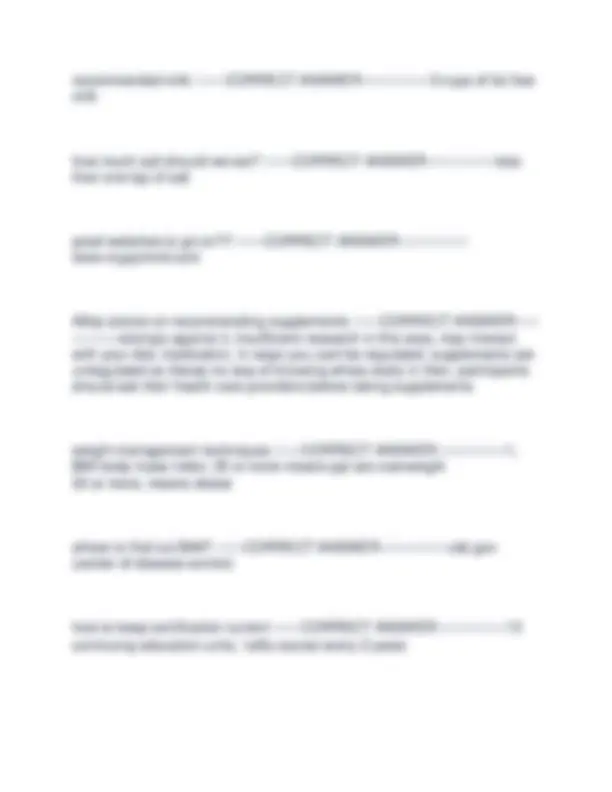


Study with the several resources on Docsity

Earn points by helping other students or get them with a premium plan


Prepare for your exams
Study with the several resources on Docsity

Earn points to download
Earn points by helping other students or get them with a premium plan
Community
Ask the community for help and clear up your study doubts
Discover the best universities in your country according to Docsity users
Free resources
Download our free guides on studying techniques, anxiety management strategies, and thesis advice from Docsity tutors
A comprehensive guide for the AFAA primary group exercise certification exam. It covers topics related to group exercise instruction, including exercise intensity, music selection, aerobic choreography, interval training, exercise types, muscle fibers, posture, exercise benefits and dangers, medications, exercise postures, training considerations, and guidelines for participants with various health conditions. The document provides a detailed overview of the knowledge and skills required for group exercise instruction, making it a valuable resource for individuals preparing for the AFAA certification exam.
Typology: Exams
1 / 47

This page cannot be seen from the preview
Don't miss anything!








































Describe the additional methods for monitoring intensity during exercise. a. Rating of perceived exertion (RPE) b. Talk test ------CORRECT ANSWER---------------a. How hard an individual is working on a scale of 1-10 (respective values 4-6 and 7-8) b. Engaging in a conversation during exercise represents working at or near a steady state. List 4 ways choreography can increase the intensity of a cardio (aerobic) workout. ------CORRECT ANSWER---------------1. further hands and feet are to the ground, higher the intensity
What are the legal considerations when purchasing or creating music for group exercise? ------CORRECT ANSWER---------------Approved by performing rights and music companies. List aerobic choreography examples for the following:
List and summarize 2 circuit training formats. ------CORRECT ANSWER----- ----------Super Circuit - Quick, intense cardio/weight setup for flow. Peripheral Heart Action - Divided into several sequences, each exercise in a sequence targets a different muscle group When instructing interval training, what does it mean by: a) Work/active recovery ratio? b) Work-to-recovery ratio? ------CORRECT ANSWER---------------a) Work/active recovery ratio is how much time is spent pushing hard then how much time recovering before repeating.(the ratio of high-intensity to low intensity) b) Work-to-recovery ratio is 1:1for sprinters = same amount of time spent pushing hard as recovering. List a minimum of 4 things one should do to ensure they are riding properly. ------CORRECT ANSWER---------------Hands remain light on handlebars. Too much gripping/body weight will tire upper body. Slow down when preparing to stand up Increase resistance when preparing to stand up Body weight should be over the pedal, with the saddle brushing lightly against the back of your legs List a minimum of 3 things an instructor should consider when designing an indoor cycling class. ------CORRECT ANSWER---------------Teaching off the bike Counting music selection Sharpening focus Positive affirmations Goal setting
For group exercise, AFAA recommends a range between _____ to _____ repetitions on whether the focus is muscular strength or endurance. ------ CORRECT ANSWER---------------8 to 25 List a minimum of 4 muscles that tend to be weaker than their opposing groups. ------CORRECT ANSWER---------------Abdominals Rear Deltoid Mid-Trapezius and Rhomboids Lower Trapezius External Shoulder Rotators Spinal Erectors Vastus Medias Tibilis Anterior List a minimum of 4 muscles that tend to be tight. ------CORRECT ANSWER---------------Front Deltoid Pectorials Hamstrings Gastrocnemius Internal Shoulder Upper Trapezius Spinal Erectors Illiopsoas Discuss "constant vs. variable" resistance and what form of equipment, used in a group exercise class would resemble variable resistance. ------ CORRECT ANSWER---------------Constant resistance is a form of dynamic resistance targeting a muscle or muscle group using free weights. Variable resistance is designed to achieve maximum muscle involvement and is usually carried out with specialized machines. Elastic bands and tubings resemble variable resistance in a group exercise setting
Excess post-oxygen consumption (EPOC) ------CORRECT ANSWER-------- -------Oxygen debt referring to oxygen uptake remaining elevated above resting levels for several minutes during recovery Oxygen deficit ------CORRECT ANSWER---------------Period in which the level of oxygen consumption is below what is necessary to supply ATP production Anaerobic threshold ------CORRECT ANSWER---------------Point at which the body can no longer meet its demand for oxygen and anaerobic metabolism is accelerated Aerobic capacity ------CORRECT ANSWER---------------Ability of the body to remove oxygen from the air and transfer it through the lungs and blood to the working muscles; related to cardiorespiratory endurance. Lactic acid ------CORRECT ANSWER---------------By-product of anaerobic metabolism of glucose; milk sugar. Aerobic vs. Anaerobic
2b) Anaerobic - Can only use carbs as fuel 3a) Aerobic - Long-duration of activity 3b) Anaerobic - Short-duration of activity 4a) Aerobic - Smaller EPOC 4b) Anaerobic - Greater EPOC Aerobic vs. Anaerobic (cont.)
rectus abdominus ------CORRECT ANSWER--------------- tensor fasciae latae ------CORRECT ANSWER--------------- adductors ------CORRECT ANSWER--------------- quadricepts group ------CORRECT ANSWER--------------- tibialis anterior ------CORRECT ANSWER--------------- illiopsoas ------CORRECT ANSWER--------------- quadratus lumborum ------CORRECT ANSWER--------------- trapezius ------CORRECT ANSWER--------------- tricepts ------CORRECT ANSWER--------------- rhomboid ------CORRECT ANSWER---------------
latissimus dorsi ------CORRECT ANSWER--------------- erector spinae ------CORRECT ANSWER--------------- gluteus medius ------CORRECT ANSWER--------------- gluteus maximus ------CORRECT ANSWER--------------- hamstrings ------CORRECT ANSWER--------------- gastrocnemius ------CORRECT ANSWER--------------- soleus ------CORRECT ANSWER--------------- achilles tendon ------CORRECT ANSWER--------------- Joint ------CORRECT ANSWER---------------The point at which two or more bones meet and movement occurs: synovial, non-synovial.
f) Circumduction ------CORRECT ANSWER---------------a) Bending of a joint between two bones b) Increasing the angle between two bones - straightening previously in flexion c) Movement AWAY from the midline of body d) Movement TOWARDS the middle of body e) Movement around the axis f) Movement in which an extremity describes a 360 degree circle Agonist ------CORRECT ANSWER---------------Muscle that is a prime mover, directly responsible for a particular action. Antagonist ------CORRECT ANSWER---------------Muscle that acts in opposition to the action. Primary movers ------CORRECT ANSWER---------------Muscles that perform movement. Assistors ------CORRECT ANSWER---------------Muscle that help perform the same task. Stabilizers ------CORRECT ANSWER---------------Muscle that contracts with no significant movement to maintain posture or fixate a joint. Define the following muscular contractions: a) Isometric b) Concentric c) Eccentric
d) Isotonic e) Isokinetic ------CORRECT ANSWER---------------a) Isometric - Tension increases, but muscle length remains the same b) Concentric - Muscle shortens as positive work is done against gravity c) Eccentric - Muscle fibers lengthen through range of motion d) Isotonic - Tension remains constant as muscle shortens and lengthens e) Isokinetic - Movements where muscles shorten at a constant rate (can't be done w/o specialized equipment) Which 3 of the muscle contractions are used in a group exercise setting? -- ----CORRECT ANSWER---------------1. Concentric - shortening phase (at a joint)
What are vitamins? ------CORRECT ANSWER---------------Non-caloric, organic compounds needed in small quantities to assist in such functions as growth, maintenance, and repair. Describe the difference between fat-soluble vitamins and water-soluble vitamins. ------CORRECT ANSWER---------------FS - Stored in liver and can be toxic w/overdosing. WS - Excreted by kidneys, not likely to be toxic. What are minerals? ------CORRECT ANSWER---------------Inorganic compounds that assist processed such as regulating activity of enzymes and maintaining acid-based balance and are structural components of body tissue. List a minimum of 8 dietary guidelines for Americans outlined by the U.S. Dept. of Health and Human Services and the U.S. Dept. of Agriculture. -----
understanding of what to eat and how much exercise is needed to maintain a healthy lifestyle. Review Appendix B: AFAA's Nutritional Supplement Policy and discuss what the role and responsibilities of a fitness professional are when it comes to the sale and distribution of nutritional supplements. ------ CORRECT ANSWER---------------They can only be sold under MY name, where item is sold in good faith to only good candidates. Explain the difference between an acute injury and a chronic injury. ------ CORRECT ANSWER---------------Chronic - Most common, long-term Acute - Sudden onset due to a specific trauma List the part of the body in which each of the following chronic injuries occurs most often. a) Plantar fasciitis b) Chondromalacia c) Achilles tendonitis ------CORRECT ANSWER---------------a) Plantar fasciitis - Inflammation of fascia/connective tissue in metatarsals. Most often occurs in arch of foot. b) Chondromalacia - Overuse injury affecting articular cartilage of posterior surface, or patella. Most often occurs in the knee cap. c) Achilles tendonitis - Inflammation of connective tissue that joins muscle to bone. Most often occurs in achilles tendon. What is the difference between a muscle strain and a muscle sprain? ------ CORRECT ANSWER---------------Strain - Overstretching or tearing of muscle or tendon. Sprain - Tearing or overstretching of ligament.